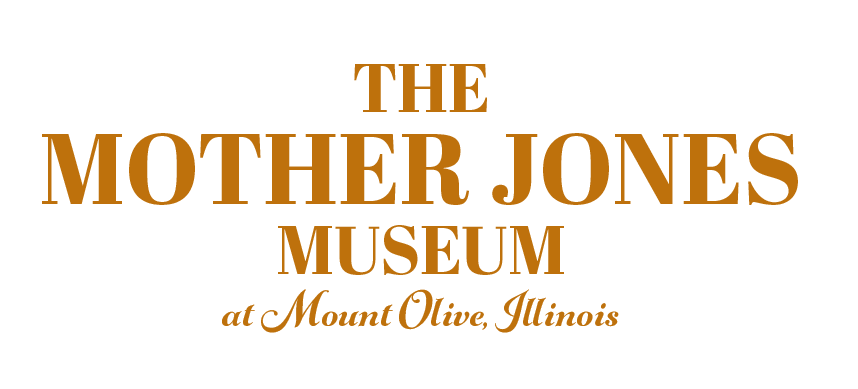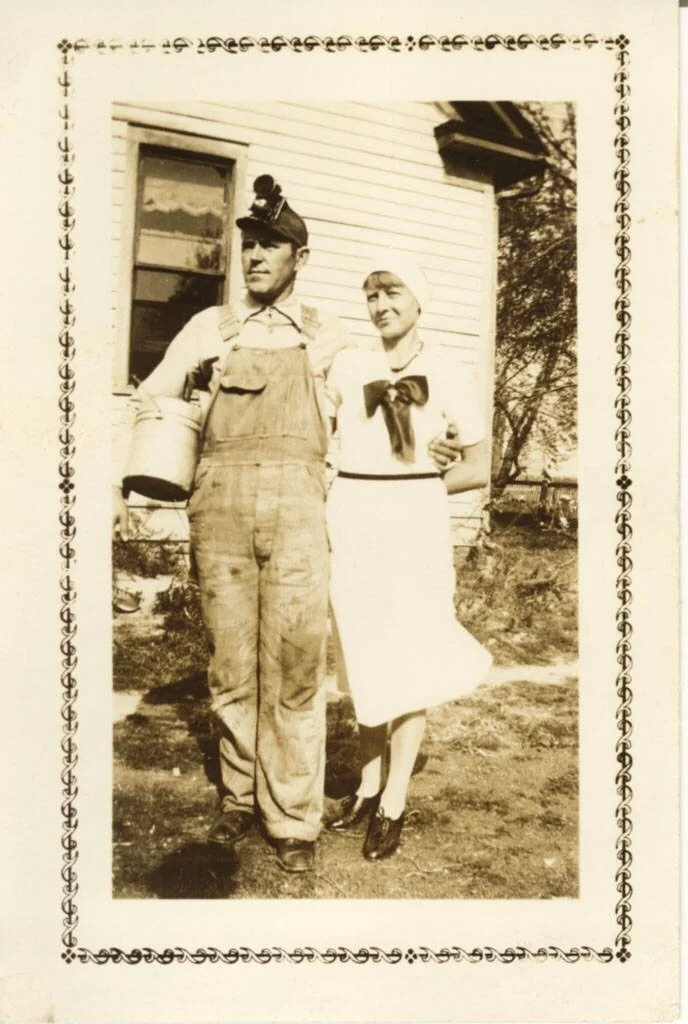Coal Mining and Labor in South Central Illinois
Retired Members of
UMWA Local 1613
At the Union Miners Cemetery
October 2020
Rudolf “Rudy” Goldacker, Ralph Govan, and Arthur Luebshueur, boy miners in a photo taken c. 1905. A gift to the Mother Jones Museum in Mt. Olive from Bill Hinz in 2018.
The story of Mother Jones and her brave boys in Illinois begins with coal. The first recorded mention of coal deposits was in the 1600s. In 1810 outcroppings of coal were mined—by 1882 there were 685 mines in 43 counties. These mines employed 20,299 miners, 870 of whom were children under the age of 16 years. As America grew, coal supplanted wood for the production of heat and power. The railroads needed coal to fuel their trains that carried goods to growing cities. Coal companies needed railroads to carry their coal to markets. Railroads and coal mines proliferated throughout Illinois.
The population of the United States grew from 10 million in 1820 to more than 100 million in 1920. Some of that growth came from immigration. In 1850 foreign born Americans were 9.7 percent of the population, increasing to 13.2 per cent in 1920. Immigrants came from across Europe and Russia to Illinois because there was work in the mines. In Mt. Olive and neighboring communities a number of miners came from Italy, Croatia, and Bohemia to work. Many had worked as miners in their home countries, others had carpentry and blacksmithing skills, some were too young to have acquired work skills before they arrived. The women in immigrant mining families became the seamstresses, bakers, cheese makers, midwives and boarding house proprietors of their communities. They organized for the union alongside their fathers, husbands and sons. There were few legal protections for miners and little compensation for injury or death. Families were often hungry and lived in little more than shacks. They worked. They organized. They made a union. Mother Jones was their champion.
This 1939 sign was at a store selling Mt. Olive coal in Madison, Illinois. Currently displayed in the Mother Jones Museum in Mt. Olive, donated to the Museum by Elmer Milcic.
The Mythic Missippippi Project has compiled an excellent list of resources for exploring the heritage of coal mining in Illinois, as well as the national significance of our region’s labor struggles. Please visit this site:
Mt. Olive miners coming up from work in the mine. Photo in the Mt. Olive Library collection.
Charles and Bess Franz, with Bess in the Progressive Miners Women’s Auxiliary uniform
Photo in the Mt. Olive Library Collection
References
Roger Daniels, Coming to America, Second Edition. Harper Collins, New York, 1991
Wayne’s World of History and Genealogy, created and maintained by Wayne Hinton, is an immensely valuable and detailed on-line record of coal mining in Illinois, Kentucky, and Indiana, with a major emphasis on the mines in Macoupin County, Illinois. https://hinton-gen.com/waynesworld.html
A miner riding a coal tram in a Mt. Olive mine. Photo from the Mt. Olive Library collection.
A map showing the extensive coal mines beneath Mt. Olive and vicinity.






